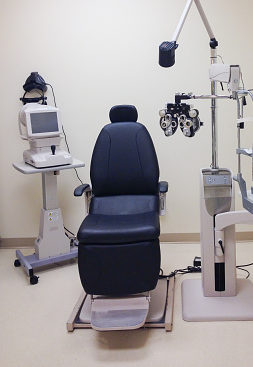March 1, 2020
By Nadine Humen Forché, OD, MS, FAAO

We’ve all seen the barrage of articles and information about the myopia epidemic. If you are like most optometrists and want to make a difference in a child’s life, you want to make your expertise available but don’t know how to implement myopia management in your practice. Many of these concerns come from a sense that doing so could be expensive. The truth is, you probably have most of the equipment you need.
Orthokeratology is one form of myopia management most optometrists can implement with relatively little additional outlay. Do you have an autorefractor? Check. How about a corneal topographer? Yep. An optical biometer? Well, maybe not.
What do these cost? Most optometrists have an autorefractor/keratometer, since we often use these for routine contact lens fittings and to help us with our starting point for subjective refractions. New autorefractor/keratometers cost between $13,000 and $18,000. If you really want to go back to the basics, you can use a handheld retinoscope and manual keratometer to get the same information, or at least to use as a backup in case the power goes out.
Corneal topographers are also commonplace in optometry practices. Without a topographer it is challenging to fit gas permeable contact lenses and co-manage or counsel for refractive surgeries. Some optometrists use a corneal topographer for all contact lens fits, including soft contact lenses, since it can map the entire cornea instead of the central 3 mm area that most auto-keratometers measure. A good refurbished corneal topographer can cost $5,000-$8,000, while a new one can be around $35,000.
The next piece of equipment is an optical biometer to determine axial length, one of the most critical measurements of myopia progression. Most optometrists do not have an optical biometer unless they are in a multispecialty referral-type practice. Having an axial length measurement enables you to have an objective measure to manage myopia. Subjective refractions are just that, subjective. Even cycloplegic refractions are not without a little subjectivity. Not too long ago most optometrists did not have an optical coherence tomographer (OCT) to manage glaucoma and macular diseases. Now, OCTs are standard-of-care for glaucoma management. They more objectively measure the ganglion cell matrix and nerve fiber layer, which allows us to more accurately determine our glaucoma management when used in conjunction with the subjective visual field testing, as well as other measurements like corneal thickness and hysteresis. A refurbished optical biometer is relatively inexpensive at about $12,000. Think about it as you would an OCT for glaucoma; it is the objective measurement for myopia progression.
For orthokeratology, you do need to be certified by the manufacturer of the lens you decide to use for myopia management. Although the certification requires time to review the fitting guides and training materials, as well as to pass an examination, the certification is usually without cost to the practitioner. The cost for orthokeratology comes when you purchase the fitting set for the design you choose. The cost of these fitting sets is between $500-$1,000. Although you may order lenses empirically, having a diagnostic fitting set is useful for troubleshooting or exchanging lenses in the middle of a fit as the cornea changes during treatment, and most manufacturers require you to at least purchase a basic fitting set to be able to order lenses for patients.
So, the basic costs for myopia management are:
- auto refractor/keratometer $13,000 (new)
- corneal topographer $5,000 (pre-owned)
- optical biometer $12,000 (pre-owned)
- orthokeratology fitting set $500
Total $30,500
The next step is to secure financing because most optometrists do not have the cash flow to purchase this equipment outright. Financing the total amount of $30,500 with a five-year loan at 5 percent interest would make your monthly payments around $575. Depending on your professional fee for an orthokeratology fit, the equipment loan would be covered by one or two fits per month. For most optometrists, if you decide to practice myopia management, one or two orthokeratology fits a month is a conservative estimate, especially considering the epidemiology of myopia.
A new treatment option is the recently approved CooperVision MiSight 1 day lens, the only FDA-approved myopia treatment in the U.S. Patient pricing for the Brilliant Futures Myopia Management Program — of which MiSight 1 day is a component in the U.S. — is set by each practice; MiSight 1 day will not be available in the U.S. as a stand-alone offering. CooperVision is marketing this lens as a myopia treatment system with a set protocol for fittings and follow-ups similar to how most optometrists employ orthokeratology in their practices.
So, what is stopping you from implementing myopia management in your practice? The cost of starting a myopia management specialty is well within the means of most optometrists. As discussed, many optometrists already have most of the equipment needed, such as autorefractors and corneal topographers used routinely in optometric practices. However, even if you are starting your myopia management practice from scratch, the monthly investment would be met by a bare minimum of orthokeratology patients. Now go out and invest in making an amazing impact on your young myopic patients.

Nadine Humen Forché, OD, MS, FAAO, is Diplomate of the American Board of Optometry and a partner at Five Points Eye Care, a group optometric practice located in Athens, Georgia.











